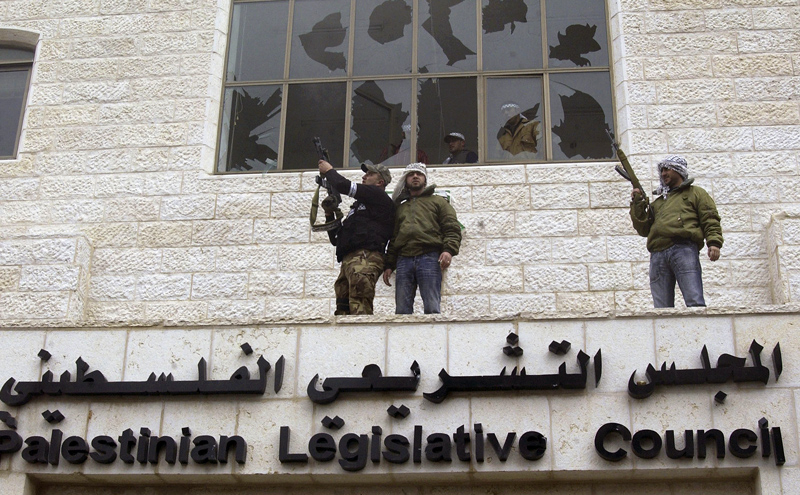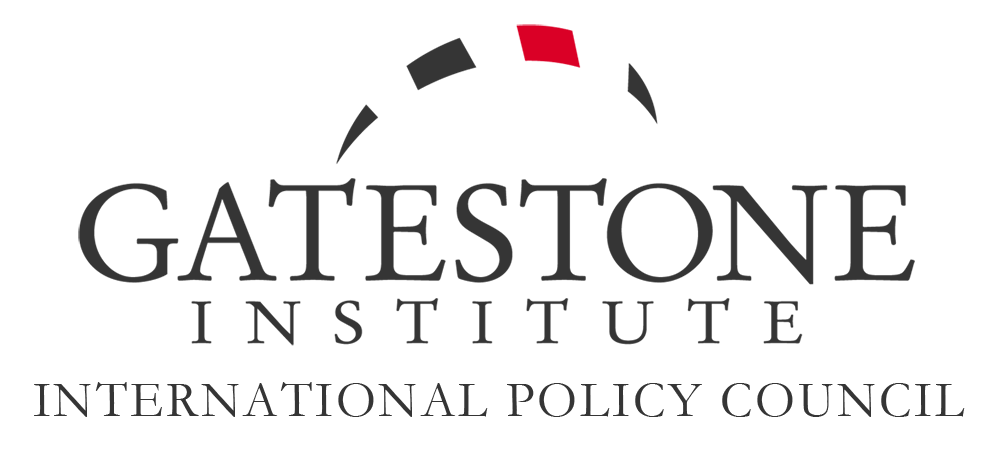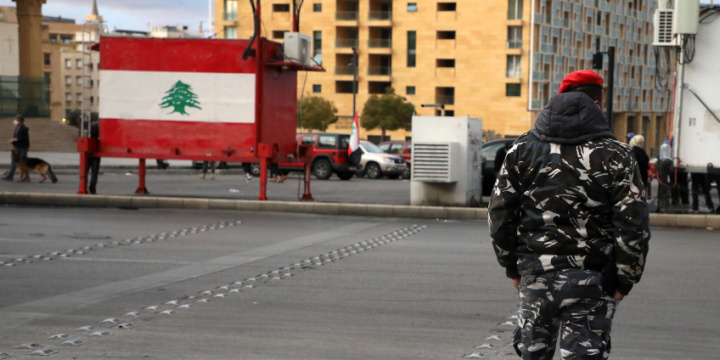 Wybory do palestyńskiej Rady Legislacyjnej wyznaczono na 15 maja 2021 roku. Poprzednie wybory w 2006 roku wygrał Hamas. W obecnej sytuacji, kiedy antyizraelskie nastroje są skrajnie wysokie, można zastanawiać się, czy przeprowadzenie wyborów teraz jest dobrym pomysłem. Z pewnością tylko jeszcze bardziej wzmocnią radykalny obóz wśród Palestyńczyków. (Zdjęcie: Zharan Hammad/Getty Images)
Wybory do palestyńskiej Rady Legislacyjnej wyznaczono na 15 maja 2021 roku. Poprzednie wybory w 2006 roku wygrał Hamas. W obecnej sytuacji, kiedy antyizraelskie nastroje są skrajnie wysokie, można zastanawiać się, czy przeprowadzenie wyborów teraz jest dobrym pomysłem. Z pewnością tylko jeszcze bardziej wzmocnią radykalny obóz wśród Palestyńczyków. (Zdjęcie: Zharan Hammad/Getty Images)
 Palestyńczycy: Co znaczy prawdziwa edukacja
Palestyńczycy: Co znaczy prawdziwa edukacja
Khaled Abu Toameh Tłumaczenie: Małgorzata Koraszewska
Ostatnie palestyńskie wybory parlamentarne, przeprowadzone 25 stycznia 2006 roku, dały zwycięstwo Hamasu, islamistycznego ruchu, który panuje w Strefie Gazy. Kolejne wybory parlamentarne są wyznaczone na 15 maja 2021 roku, chociaż parlament, znany jako Palestyńska Rada Legislacyjna (PLC) był wybrany na czteroletnią kadencję.
Zwycięstwo Hamasu w 2006 roku wywołało zażarty spór z frakcją Fatah prezydenta Autonomii Palestyńskiej, Mahmouda Abbasa, skutecznie paraliżując PLC i tworząc dwa odrębne minipaństwa dla Palestyńczyków – jedno na Zachodnim Brzegu i drugie w Strefie Gazy.
Hamas wygrał w 2006 roku głównie dlatego, że jego kandydaci startowali z listy o nazwie Blok Zmiany i Reformy.
Hasłem listy było: “Islam jest rozwiązaniem; jedna ręka buduje, druga stawia opór”. Hamas w programie wyborczym obiecywał zwalczać wszystkie rodzaje korupcji i “uczynić islamskie prawo [szariatu] głównym źródłem legislacji w Palestynie”. Ponadto zobowiązywał się do “użycia wszystkich metod, włącznie ze zbrojnym oporem” przeciwko Izraelowi..
Dzięki tym obietnicom Hamas zdobył 74 ze 132 miejsc w PLC. Jego rywale z Fatahu zdobyli 45 miejsc.
Wyniki wyborów 2006 roku pokazały, że większość Palestyńczyków w pełni popierała wezwanie Hamasu do zakończenia korupcji Autonomii Palestyńskiej, narzucenia islamskiego prawa i, co najważniejsze, kontynuowania walki zbrojnej przeciwko Izraelowi.
Hamas uzasadniał swoją decyzję uczestniczenia w wyborach tym, że było to w kontekście jego “wszechstronnego planu wyzwolenia Palestyny”.
Zwycięskim przesłaniem Hamasu do Palestyńczyków było wówczas: nasze uczestnictwo w wyborach nie znaczy, że uznajemy Umowy z Oslo i prawo Izraela do istnienia. Jest to tylko krok ku osiągnięciu celu wyzwolenia całej Palestyny od rzeki Jordan do Morza Śródziemnego.
Hamas nie uznaje prawa Izraela do istnienia. Zbojkotował pierwsze parlamentarne wybory w 1996 roku pod pretekstem, że głosowanie odbywało się pod parasolem Umów z Oslo, podpisanych trzy lata wcześniej między OWP a Izraelem.
Hamas nadal jest przeciwny Umowom z Oslo, ponieważ nie wierzy w żaden proces pokojowy z Izraelem. Jak bowiem może Hamas zaakceptować jakikolwiek proces pokojowy, skoro jego Karta otwarcie wzywa do unicestwienia Izraela?
Polityczny program Fatahu także obiecywał “całkowite zakończenie wszelkiego rodzaju korupcji i nadużyć władzy”. Fatah jednak nie obiecywał “walki zbrojnej” przeciwko Izraelowi ani narzucenia islamskiego prawa jako “głównego źródła legislacji w Palestynie”.
Palestyńczycy nie uwierzyli słowom Fatahu o zakończeniu korupcji: widzieli jak przywódcy Fatahu wzbogacili się po ustanowieniu Autonomii Palestyńskiej w 1994 roku dzięki setkom milionów dolarów, którymi zasypywali ich USA, Unia Europejska i inni zachodni darczyńcy bez żądania jakichkolwiek sprawozdań i odpowiedzialności.
Chociaż Fatah używał ostrej, antyizraelskiej retoryki w swoim programie wyborczym, niemniej Palestyńczycy woleli Hamas. Powodem, dla którego Fatah w odróżnieniu od Hamasu nie mówił o “wyzwoleniu całej Palestyny” ani nie obiecywał rozpoczęcia walki zbrojnej przeciwko Izraelowi, jest to, że jego przywódcy obawiali się, że USA i UE zatrzymają finansową pomoc.
Wszystko, co Fatah powiedział wówczas, to że Palestyńczycy są “uprawnieni do opierania się okupacji zgodnie z międzynarodowymi konwencjami”.
Te niejasne słowa o antyizraelskim “oporze” nie wystarczyły, by przekonać większość Palestyńczyków do głosowania na Fatah. Gdyby Fatah wspomniał “zbrojny opór” w swoim programie wyborczym, udałoby mu się zdobyć poparcie większej liczby wyborców.
Kolejna lista, która stanęła do wyborów 2006 roku nosiła nazwę Trzecia Droga. Na jej czele stał Salam Fajjad, który miał doktorat z ekonomii z University of Texas w Austin. Lista Fajjada zdobyła zaledwie 2,41% głosów w wyborach parlamentarnych 2006 roku. Fajjad był potem premierem Autonomii Palestyńskiej w latach 2007- 2013.
Dlaczego Trzecia Droga zdobyła tak mało głosów? W odróżnieniu od większości kandydatów z list Fatahu i Hamasu, Fajjad nie brał udziału w antyizraelskich działaniach terrorystycznych; co najważniejsze, nigdy nie spędził ani jednego dnia w więzieniu. Dla wielu Palestyńczyków jest dużo ważniejsze być absolwentem izraelskiego więzienia niż absolwentem University of Texas.
Program wyborczy Fajjada skupiał się na potrzebie “zakończenia anarchii w dziedzinie bezpieczeństwa i chaosie w sprawie broni, zbudowanie silnych i profesjonalnych sił bezpieczeństwa i zrealizowanie programu reform” w instytucjach AP.
Innymi słowy, Fajjad obiecywał rozwiązanie zbrojnych gangów i milicji przemierzających palestyńskie ulice i zapewnienie, że siły bezpieczeństwa będą działać zgodnie z prawem. Najwyraźniej te obietnice nie były atrakcyjne dla przeważającej większości Palestyńczyków.
Palestyńczycy, którzy nie głosowali na Trzecią Drogę Fajjada, mówili w rzeczywistości, że sprzeciwiają się rozbrojeniu zbrojnych grup Fatahu i Hamasu.
Jeśli Fajjad zdecyduje się kandydować w wyborach parlamentarnych 22 maja z tym samym programem, nie jest prawdopodobne, by otrzymał więcej głosów niż w 2006 roku. Właściwie jest całkowicie możliwe, że otrzyma mniej głosów niż wtedy. Każdy Palestyńczyk, który tak jak Fajjad, stanie do wyborów z platformą mówiącą o pokoju i koegzystencji z Izraelem, przegra.
Jak może kandydat, który głosi normalizację stosunków i pokój z Izraelem, wygrać w czasie, kiedy Palestyńczycy są codziennie radykalizowani (przez swoich przywódców)? Jak może jakikolwiek kandydat, który nie siedział w izraelskim więzieniu, wygrać w czasie, kiedy palestyńscy więźniowie w Izraelu są gloryfikowani przez palestyńskich przywódców jako “bohaterzy“?
Czy jakikolwiek kandydat może stanąć w centrum Ramallah, de facto stolicy palestyńskiej, i mówić o promowaniu pokoju i normalizacji stosunków z Izraelem? Każdy kandydat, który zrobiłby to, miałby szczęście, gdyby nie został potępiony jako zdrajca – albo gorzej.
Jedynym sposobem wydobycia się z tego bagna jest edukacja. Prawdziwa edukacja zaczyna się w domu, niekoniecznie w klasie szkolnej. Prawdziwa edukacja zaczyna się wraz z tym, co rodzice przekazują swoim dzieciom. Prawdziwa edukacja zaczyna się od tego, co dziecko widzi i słyszy w swoim środowisku domowym. Prawdziwa edukacja zaczyna się od tego, co przywódcy i media mówią dzieciom.
Codzienne antyizraelskie podżeganie w mediach, meczetach i w słowach palestyńskich przywódców wyjaśnia, dlaczego nie ma miejsca dla ludzi takich jak Fajjad w palestyńskim dyskursie politycznym.
Palestyńscy przywódcy muszą powiedzieć swojej ludności, że Izrael ma prawo istnieć. Muszą powiedzieć swojej ludności, że pokój i normalizacja stosunków są dobre nie tylko dla Izraela, ale także dla Palestyńczyków. Muszą powiedzieć swojej ludności, że współpraca z Izraelem jest lepsza niż bojkot.
Nazywanie Izraela “syjonistycznym tworem” lub “państwem okupacji” służy tylko dalszej delegitymizacji Izraela i demonizacji Żydów.
Wzywanie do wszystkich form oporu przeciwko Izraelowi uniemożliwia orędownikom pokoju wygranie palestyńskich wyborów. Oświadczenia Fatahu i Hamasu, które wzywają do pozywania Izraelczyków za “zbrodnie wojenne”, oznaczają, że większość Palestyńczyków będzie głosowała na każdą listę, która obiecuje wojnę, a nie pokój z Izraelem. Jedynymi kandydatami, którzy prawdopodobnie wygrają wybory są ci, którzy podżegają do przemocy wobec Izraela.
W obecnej sytuacji, kiedy antyizraelskie nastroje są skrajnie silne, można zastanawiać się, czy przeprowadzenie wyborów teraz jest dobrym pomysłem. Z pewnością tylko jeszcze bardziej wzmocnią radykalny obóz wśród Palestyńczyków.
Zawartość publikowanych artykułów i materiałów nie reprezentuje poglądów ani opinii Reunion’68,
ani też webmastera Blogu Reunion’68, chyba ze jest to wyraźnie zaznaczone.
Twoje uwagi, linki, własne artykuły lub wiadomości prześlij na adres:
webmaster@reunion68.com










